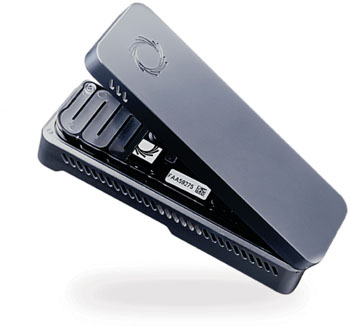UTI Testing Technology Cuts Screening Time Significantly
By LabMedica International staff writers
Posted on 12 Oct 2016
Most urinary tract infections (UTI) are mild, but serious cases can lead to hospitalization and at worst, bacteria can enter the bloodstream causing urosepsis, a life-threatening condition. In this case antibiotics are vital and must be given immediately.Posted on 12 Oct 2016
Faster prediction of whether the UTI is caused by a highly resistant type of bacteria will allow precise tailoring of treatment. The patient will get an antibiotic that is sure to be active against their pathogen, and society's limited antibiotic resource will be better managed. This will help in the fight against increasing antibiotic resistance, one of the biggest challenges facing society today.

Image: The MinION nanopore sequencing device (Photo courtesy of Oxford Nanopore Technologies).
Medical scientists at the University of East Anglia (Norwich, UK) explored whether nanopore sequencing could accelerate diagnosis and resistance profiling, using complicated urinary tract infections as an exemplar. Bacterial DNA was enriched from 10 clinical urines and from five healthy urines ‘spiked’ with multiresistant Escherichia coli then sequenced. . Sequences were analyzed using external databases and bioinformatic pipelines or, ultimately, using integrated real-time analysis applications. Results were compared with Illumina data and resistance phenotypes.
The team used the MinION nanopore sequencing (Oxford Nanopore Technologies, Oxford, UK) which correctly identified pathogens without culture and, among 55 acquired resistance genes detected in the cultivated bacteria by Illumina sequencing, 51 were found by MinION sequencing directly from the urines; with three of the four failures in an early run with low genome coverage. Resistance-conferring mutations and allelic variants were not reliably identified. MinION sequencing comprehensively identified pathogens and acquired resistance genes from urine in a timeframe of four hours from sample to result similar to polymerase chain reaction (PCR).
Justin O'Grady, PhD, said, a senior author of the study, said, “This study is the first to use MinION sequencing to rapidly diagnose pathogens and antimicrobial resistance in clinical samples, without growing them. Improvements in the sequencing technology, data analysis and sample preparation mean we've reduced the turnaround time to four hours. Getting results this fast would allow clinicians to adjust antimicrobial very early, even before the second dose is given as most antibiotics are given around once every eight hours.” The study was published on September 25, 2016, in the Journal of Antimicrobial Chemotherapy.
Related Links:
University of East Anglia
Oxford Nanopore Technologies













